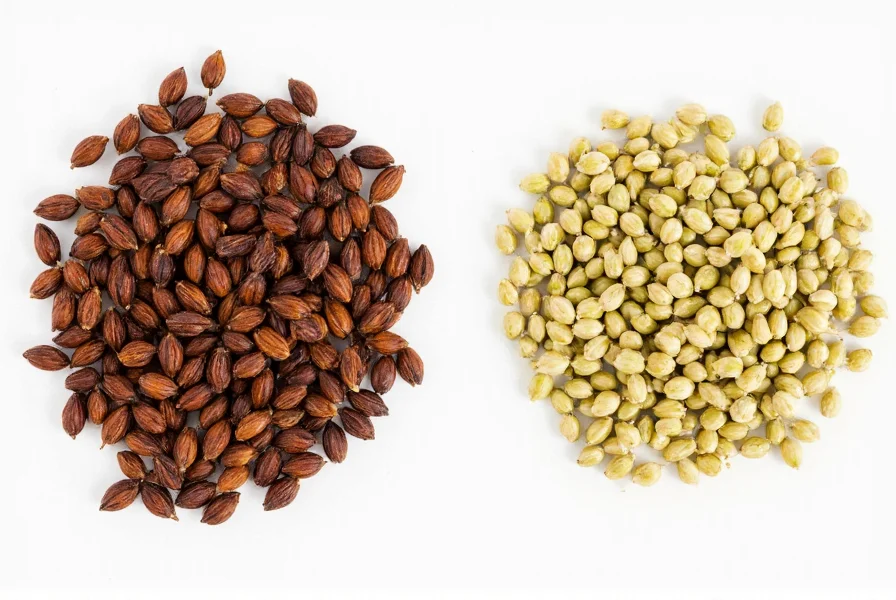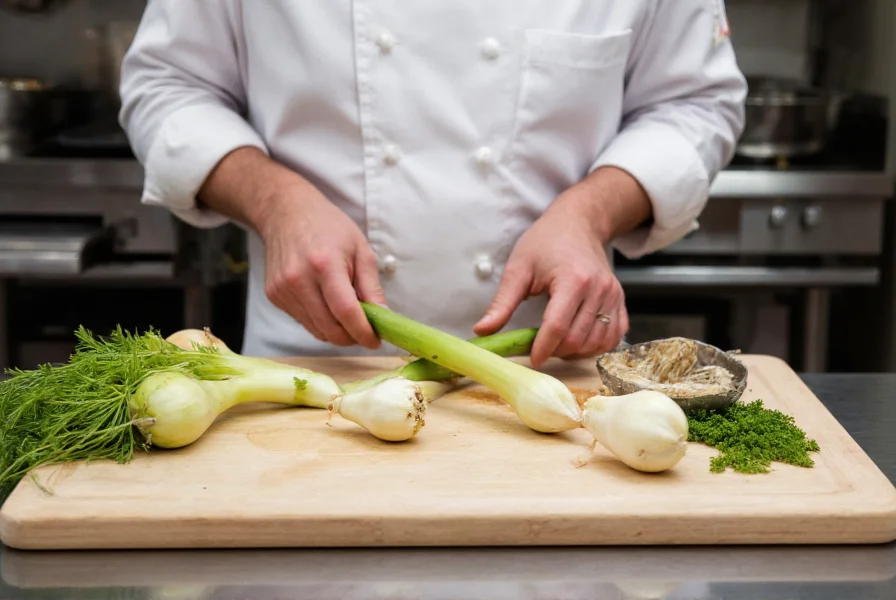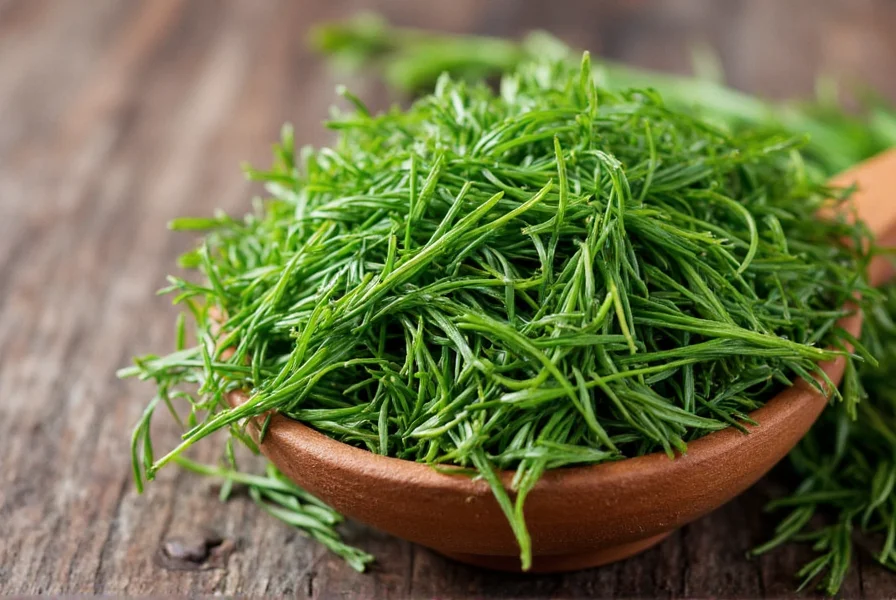No, anise and fennel are not the same plant, though they share similarities. Anise (Pimpinella anisum) refers specifically to the seeds of an annual herb, while fennel (Foeniculum vulgare) is a perennial plant with edible bulb, feathery fronds, and seeds. Both belong to the Apiaceae family and have licorice-like flavors, but they differ significantly in appearance, cultivation, and culinary applications.
When exploring is anise same as fennel, many home cooks and food enthusiasts encounter confusion due to their similar flavor profiles. Understanding the distinction between these two botanicals is essential for proper culinary application and recipe success. While both deliver that characteristic licorice note, they're fundamentally different plants with unique properties that affect how they should be used in cooking.
What Exactly is Anise?
Anise, also known as aniseed, comes from Pimpinella anisum, an annual flowering plant native to the eastern Mediterranean and Southwest Asia. The primary culinary component is the small, grayish-brown seed-like fruit that develops after the plant flowers. These seeds contain anethole, the compound responsible for the distinctive sweet licorice flavor.
Anise seeds have a more intense, sweeter licorice flavor compared to fennel seeds. They're commonly used in baking (biscotti, gingerbread), liqueurs (ouzo, anisette), and spice blends worldwide. In many traditional medicines, anise has been used for digestive purposes and to alleviate respiratory issues.

Understanding Fennel: More Than Just Seeds
Fennel (Foeniculum vulgare) is a hardy perennial plant with multiple culinary components. Unlike anise, which is primarily valued for its seeds, fennel offers three distinct edible parts:
- Fennel bulb - The crisp, white base used raw in salads or roasted as a vegetable
- Fennel fronds - The delicate, feathery green tops used as an herb
- Fennel seeds - The small seeds harvested from the flower heads
Fennel seeds have a milder, slightly sweeter licorice flavor than anise seeds with subtle citrus notes. The plant grows wild in many regions and is cultivated extensively for both its vegetable and seed components. In Italian cuisine, fennel bulb is essential in dishes like finocchio alla milanese, while fennel seeds feature prominently in Indian spice blends like panch phoron.
Key Differences Between Anise and Fennel
Understanding the difference between anise and fennel requires examining several critical factors. While they share superficial similarities, their botanical classification, physical characteristics, and culinary applications differ significantly.
| Characteristic | Anise | Fennel |
|---|---|---|
| Botanical Name | Pimpinella anisum | Foeniculum vulgare |
| Plant Type | Annual herb | Perennial herb |
| Primary Culinary Part | Seeds only | Bulb, fronds, AND seeds |
| Flavor Intensity | Stronger, sweeter licorice | Milder licorice with citrus notes |
| Seed Size | Smaller (2mm), oval | Larger (4-8mm), oblong |
| Culinary Applications | Primarily baking and liqueurs | Versatile: vegetable, herb, spice |
Culinary Applications: When to Use Each
Knowing what's the difference between anise and fennel helps determine proper usage in recipes. Their flavor profiles, while similar, aren't interchangeable in all contexts.
Anise seeds work best when you need a pronounced licorice flavor:
- Baking applications where intense flavor is desired
- Liqueur production (anisette, ouzo, arak)
- Spice blends for Middle Eastern and Eastern European cuisines
- As a digestive aid in traditional medicine
Fennel offers more versatility:
- Bulb: Roasted, grilled, or raw in salads (especially with citrus)
- Fronds: As a fresh herb in salads, fish dishes, or as garnish
- Seeds: In sausages, breads, and spice mixes where milder licorice is appropriate

Can You Substitute One for the Other?
When considering can I substitute fennel for anise, the answer depends on the recipe and which part of the fennel plant you're using.
Substituting anise for fennel seeds: Use 3/4 teaspoon anise seed for every 1 teaspoon fennel seed, as anise is more potent. This works well in baking and spice blends but may overpower delicate dishes.
Substituting fennel seeds for anise: Use 1 1/4 teaspoons fennel seed for every 1 teaspoon anise seed. This substitution works in most savory applications but may lack sufficient intensity in baked goods.
Important note: You cannot substitute fennel bulb or fronds for anise seeds, as they serve completely different culinary functions. Similarly, anise seeds cannot replace fennel bulb in recipes.
Common Misconceptions Explained
The confusion around anise vs fennel seeds stems from several factors:
- Shared flavor compound: Both contain anethole, creating similar licorice notes
- Naming inconsistencies: In some regions, fennel seeds are incorrectly called "sweet anise"
- Visual similarity: Both are small, brownish seeds that look somewhat alike
- Culinary overlap: Both appear in spice blends and certain regional cuisines
Star anise (Illicium verum), a completely different plant from China, further complicates the issue. Despite its name, star anise is unrelated to both anise and fennel, though it shares the characteristic star-shaped pod and licorice flavor.
Practical Guidance for Home Cooks
When working with these ingredients, consider these practical tips for the best results:
- Storage: Keep both seeds in airtight containers away from light; they'll maintain potency for 1-2 years
- Toast for intensity: Lightly toasting either seed enhances their flavor before use
- Grind fresh: For strongest flavor, grind seeds immediately before adding to recipes
- Bulb preparation: Remove tough outer layers from fennel bulb and trim the stalk base
- Frond usage: Fennel fronds make excellent garnish and can substitute for dill in many recipes
Conclusion: Clearing the Confusion
Understanding anise fennel comparison reveals they're distinct botanicals with different culinary applications despite their flavor similarities. Anise refers specifically to the seeds of Pimpinella anisum, while fennel encompasses the entire Foeniculum vulgare plant with multiple edible components. Recognizing these differences ensures proper usage in recipes and prevents disappointing results from inappropriate substitutions.
When following recipes, pay close attention to whether they specify anise seeds, fennel seeds, fennel bulb, or fennel fronds, as these terms are not interchangeable. With this knowledge, you can confidently navigate recipes from various culinary traditions that feature these distinctive flavoring agents.
Can I use fennel seeds instead of anise seeds in baking?
Yes, but with adjustments. Use 1 1/4 teaspoons of fennel seeds for every 1 teaspoon of anise seeds required, as fennel has a milder flavor. Note that the final product may have slightly less intense licorice flavor and subtle citrus notes.
Why do some recipes call for both anise and fennel?
Recipes that use both leverage their complementary flavors. Anise provides intense licorice notes while fennel adds complexity with its milder flavor and citrus undertones. This combination creates layered flavor profiles common in Mediterranean and Middle Eastern cuisines.
Are anise and fennel safe for people with licorice allergies?
No. Both contain anethole, the compound responsible for licorice flavor that triggers reactions in sensitive individuals. People with licorice allergies should avoid both anise and fennel, along with star anise and actual licorice root.
What's the difference between anise seed and star anise?
Anise seed comes from Pimpinella anisum and is a small oval seed, while star anise is the star-shaped fruit of Illicium verum, a completely different plant native to China. Both have similar licorice flavors but different flavor profiles and culinary applications.
Can I grow both anise and fennel in my garden?
Yes, but with different requirements. Anise is an annual that prefers warm, dry conditions and doesn't transplant well. Fennel is a perennial that grows vigorously in most temperate climates but can become invasive. Note that fennel may cross-pollinate with nearby dill.











 浙公网安备
33010002000092号
浙公网安备
33010002000092号 浙B2-20120091-4
浙B2-20120091-4